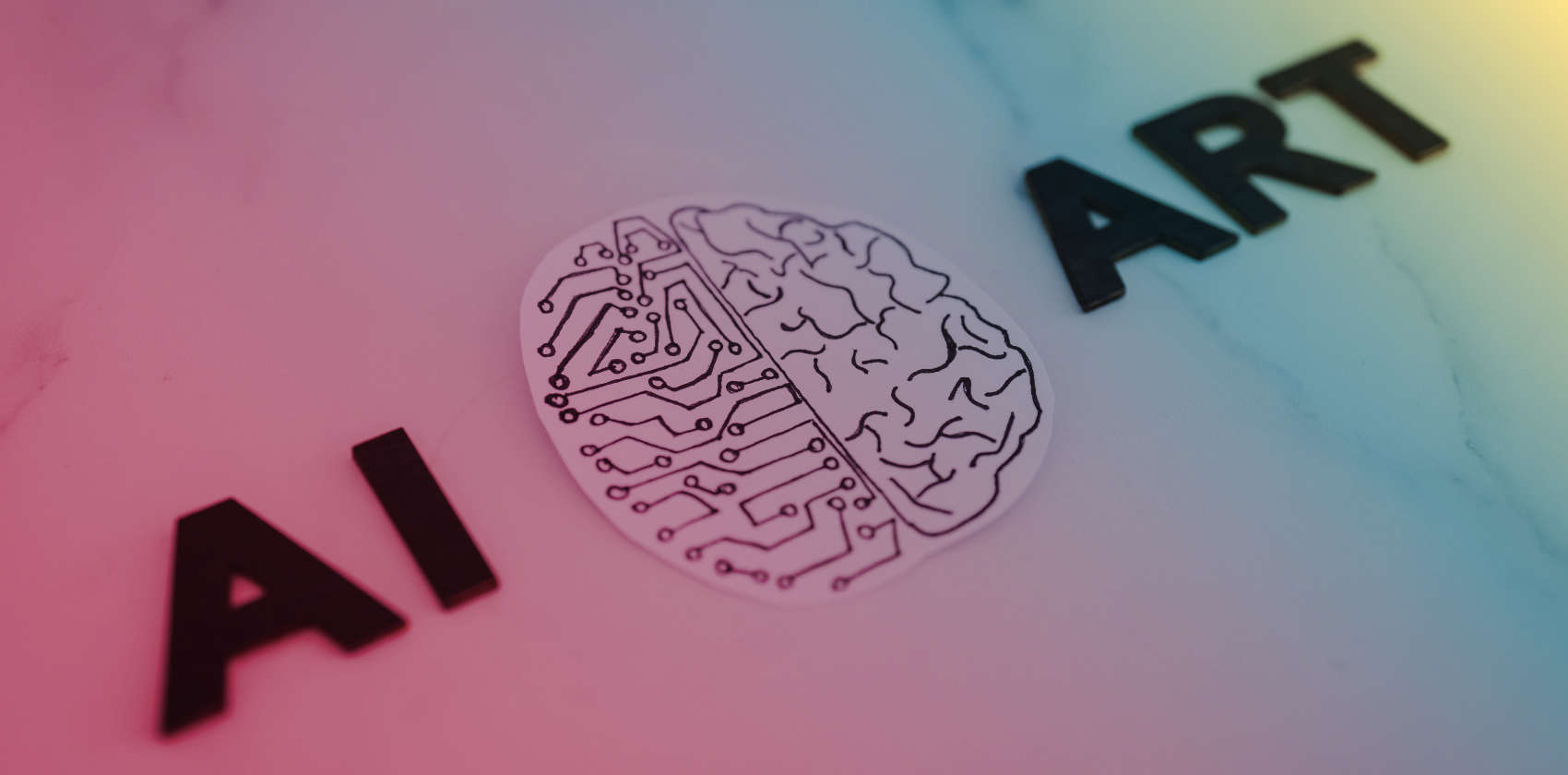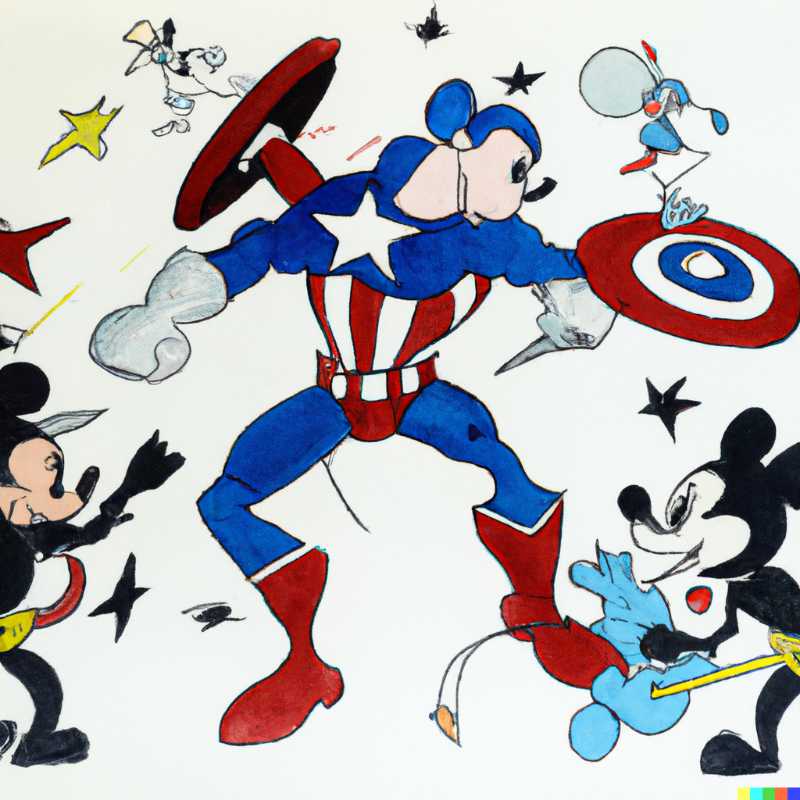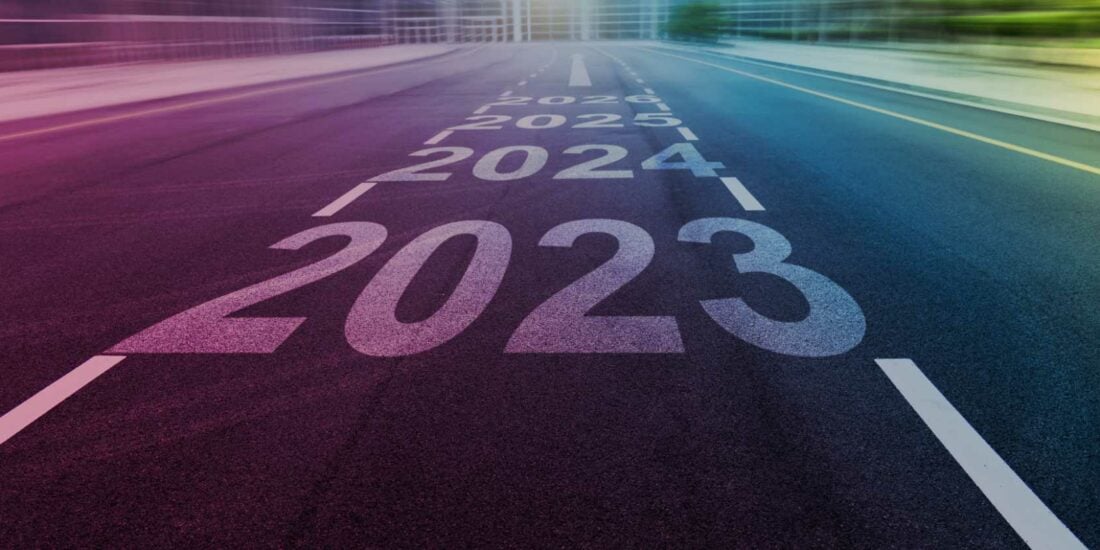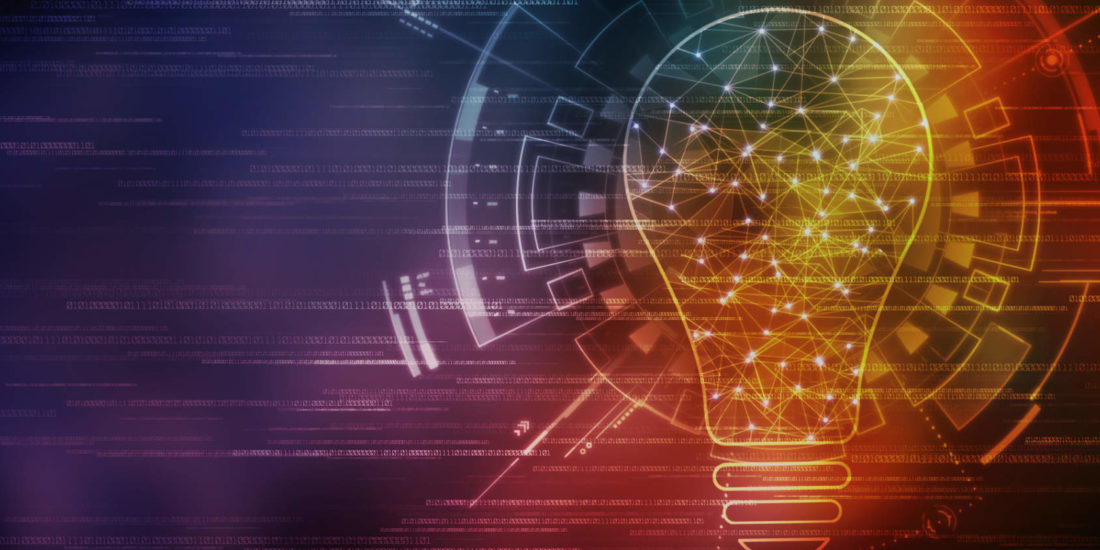
The Best Things in Life are Not for Free: Copyright and Generative AI Learning
Generative AI tools like Chat GPT and Stable Diffusion must have access to millions of text and images in order for them to learn and eventually generate output successfully in response to user commands. The key question for copyright lawyers today is whether this machine learning should come at a price.
There is certainly a swell of public interest in what Chat GPT can deliver, whether in assisting students with writing school assignments or in generating scam e-mails. The new GPT-4 by OpenAI, touted to be revolutionary in how it can respond to both text and image commands, is available for a modest fee of US$20 a month to Chat GPT Plus subscribers. Not too long ago, many of us were obsessed with apps that can make us look like superheroes and AI image generators such as Stable Diffusion and DALL-E have been in the news for potentially infringing copyright. The Harvard Business Review pointed out in February 2023 that while Chat GPT has created a global frenzy, “there are major practical, technical, and legal challenges to overcome before these tools can reach the scale, robustness, and reliability of an established search engine such as Google.”1Ege Gurdeniz and Kartik Hosanagar, ‘Generative AI Won’t Revolutionize Search – Yet’, Harvard Business Review (23 February 2023) https://hbr.org/2023/02/generative-ai-wont-revolutionize-search-yet.
While the debate on whether autonomous AI-generated works deserve copyright protection appear to have taken a backseat,2For a comprehensive analysis, see Wee Liang Tan and David Tan, ‘AI, Author, Amanuensis’ (2022) 5(2) Journal of Intellectual Property Studies 1. The United States Copyright Office has also released an authoritative statement of policy rejecting any registration of copyright for works created without any human contribution: Copyright Office, ‘Copyright Registration Guidance: Works Containing Material Generated by Artificial Intelligence’, 37 CFR Part 202 (16 March 2023): https://www.govinfo.gov/content/pkg/FR-2023-03-16/pdf/2023-05321.pdf. the present legal issues with programmes that can produce essays or create realistic images and art from a description in natural language text prompts are very much occupying the centre stage in copyright law discussions. These sophisticated AI technologies which train on vast quantities of authorial works to generate new content in response to text prompts are often described as “generative AI”, and the manner in which these copyright-protected works are employed in training the AI have attracted a number of high-profile lawsuits since the start of 2023.
How Chat GPT and Stable Diffusion Works – Generative AI Learning Infringes Copyright
In order for Chat GPT to respond to the questions we input, it needs to have access to millions or even billions of literary works – many of which are protected by copyright – in order to produce fully fleshed out answers and results based on digitally accessible text-based information. Often referred to as the input of data for machine learning or machine training, an AI system is “fed” the relevant works in order for it to function effectively. To date, the companies behind these impressive generative AI systems have not disclosed the datasets they use for machine training. Nonetheless, in order for an AI system like Stable Diffusion to generate images based on text prompts, billions of text-and-image pairings have to be loaded into the computer memory, which are then encoded as an essential element of training the model. Stability AI, which owns Stable Diffusion, then adds visual noise to the encoded images to teach the model to generate output images that are consistent with a particular text description.
When inputting the images for machine learning, usually another algorithm will be scraping the internet for content from various websites, invariably accessing content without permission and in violation of express prohibitions against such conduct contained in the terms of use of these websites. Thus, an unauthorised reproduction of text and images would have been made in the machine training process, thus infringing copyright.
It is therefore not surprising when Getty Images filed a lawsuit against Stability AI in the United States in February this year for copying over 12 million photographs from its collection.3Getty Images (US), Inc v Stability AI, Inc, Case 1:23-cv-00135-UNA (filed 3 February 2023) (District Court of Delaware): https://fingfx.thomsonreuters.com/gfx/legaldocs/byvrlkmwnve/GETTY%20IMAGES%20AI%20LAWSUIT%20complaint.pdf This follows a class action lawsuit by artists filed in January against Stability AI, Midjourney and DeviantArt for infringing their copyright through the use of training images.4Andersen et al v Stability AI Ltd et al, Case 3:23-cv-00201 (filed 13 January 2023) (Northern District Court of California): https://fingfx.thomsonreuters.com/gfx/legaldocs/myvmogjdxvr/IP%20AI%20COPYRIGHT%20complaint.pdf.
More recently, perhaps an implicit acknowledgement that the input of copyright-protected works for AI learning would be infringing, Adobe announced that it plans to pay content creators for using their works in its new AI tool – Firefly – and that it will also allow creators the choice to not let their work be used to train the AI.5Krist Boo, ‘Adobe to pay AI-content creators in groundbreaking move’, The Straits Times (21 March 2013): https://www.straitstimes.com/business/adobe-to-pay-ai-content-creators-in-groundbreaking-move. With just a text prompt, one can potentially use Firefly to create images, audio, illustrations, videos or 3D models.
Generative AI Output Can Also Infringe Copyright
When Chat GPT or Stability AI generates text or images based on the user’s questions or commands, the output can also infringe copyright in a source text or image if it is substantially similar to the original. For instance, in generating an essay, Chat GPT may not necessarily paraphrase all the sentences from its training dataset of literary works, and will invariably reproduce significant amount of text verbatim from its sources. In the Getty Images lawsuit, the claim identified some of the output delivered by Stability AI to include a modified or distorted version of a Getty Images watermark, underscoring the clear link between the copyrighted images and the final product. In such circumstances, this would be another instance of copyright infringement.
One should, however, note that copyright does not protect the style of an artist, no matter how distinctive – this includes a painting-style (like Picasso’s distinctive cubist style or Warhol’s silkscreen treatments of photographs), writing-style or singing-style. In the same way that we can freely paint and sell a scenery of the Singapore Botanic Gardens in a Monet impressionist-style (assuming that Claude Monet’s paintings are still protected by copyright), it is not copyright infringement if DALL-E, in response to a prompt “Singapore Botanic Gardens in the style of Monet” generates a particular image that evokes Monet’s Bridge Over A Pond Of Water Lilies.
Does the Computational Data Analysis Exception Apply?
In Singapore, copyright law can provide a defence for such infringing uses if these uses fall under either the computational data analysis exception (section 243-244 of Copyright Act) or the fair use provision (section 190-191). Under the computational data analysis exception, five stringent conditions must be fulfilled, and they include “lawful access” to the copyrighted content and that the making of a copy cannot be used for any other purpose except for identifying, extracting or analysing information/data and using that to improve the functioning of a program in relation to that type of information/data.6For an analysis of the computational data analysis exception, see David Tan and Thomas Lee Chee Seng, ‘Copying Right in Copyright Law: Fair Use, Computational Data Analysis and the Personal Data Protection Act’ (2021) 33 Singapore Academy of Law Journal 1032.
The legislation gives an example that “X does not have lawful access to the first copy if X accessed the first copy by circumventing paywalls” and that the use of images to train a computer program to recognise images, such as facial recognition software, as a permissible purpose. Furthermore, it is stated in the Act that “X does not have lawful access to the first copy if X accessed the first copy in breach of the terms of use of a database.”
For machine learning purposes, the scraping of the internet for text and images will often circumvent paywalls or violate the terms of use, hence failing the “lawful access” requirement. The making of a copy, which includes data storage, will not be for the sole purpose of analysing the data to improve the functioning of the AI in relation to that data; it will be for the purpose of generating new works based on that data, which is an impermissible purpose.
Is it Fair Use?
But is it nonetheless fair use? In Singapore, section 191 of the Copyright Act enumerates a non-exclusive list of four factors to be weighed to determine whether an unauthorised use is fair, and hence a permitted use, much akin to the US fair use provision 17 USC §107. In the United States, fair use has allowed Google Books, acting without permission of rights holders, to make digital copies of tens of millions of books to establish a publicly available internet search function.7Authors Guild v Google, Inc, 804 F.3d 202 (2nd Cir. 2015). An important feature is an internet user can use this function to search without charge to determine whether the book contains a specified word or term and also see snippets of text containing the searched-for terms.
This decision on “transformative use” was also cited by the Singapore Court of Appeal with approval in Global Yellow Pages v Promedia Directories.8Global Yellow Pages Ltd v Promedia Directories Pte Ltd (2017) SGCA 28; (2017) 2 SLR 185 at (81). In evaluating the extent to which a work is transformative, the court will typically consider the purpose of the original and infringing secondary works; the secondary use should be plainly different from the original purpose for which they were created. It was important that Google Books augmented public knowledge by making available information about the books without providing the public with a substantial substitute for matter protected by the copyright interests in the original works.9Ibid (citing Authors Guild v Google, Inc, 804 F.3d 202, 207 (2nd Cir. 2015)).
Regarding generative AI, two fair use factors that are likely to carry the greatest weight in the analysis are:
- what is the purpose/character of the use, namely whether the use by generative AI is “transformative”, i.e. changes the purpose or the nature of the original work in some way; and
- what is the impact of the generative AI’s use on the market i.e., does it threaten the livelihood of the original creator by competing with their works or the licensing market for their works?
Chat GPT, Stable Diffusion and many other comparable AI programs are not search engines. A number of them are highly successful commercial enterprises, with Stability AI valued at US$1 billion, and some charging a user fee for their services. There is also little transformative purpose to be found as the AI would be accessing and reproducing the creative expression in these works in the outputs, i.e. the works would have been appropriated for their creative elements rather than their underlying facts. Generative AI systems are trained essentially with existing creative works and then they simply remix them to derive more works of the same kind based on our text prompts. Depending on the text prompts, it may be reproducing certain copyright-protected works without the requisite degree of transformativeness that will tilt the first factor in favour of fair use. Consider, for instance, DALL-E’s response to my text prompt “Mickey Mouse in the style of Picasso in battle with Captain America” (below). Well, it does not really look anything like the style of Picasso’s paintings of La Guernica or Femme en pleurs (Weeping Woman), but there is substantial similarity with two copyright-protected works, i.e. Captain America and Mickey Mouse. There does not seem to be sufficient visual transformation (in the manner required in the US Second and Ninth Circuit decisions like Blanch v Koons and Dr Seuss Dr Seuss Enterprises LP v ComicMix LLC),10The collage Niagara by Jeff Koons included new visual elements and used Andrea Blanch’s image as fodder for his commentary on the social and aesthetic consequences of mass media; his purposes in using Blanch’s image were also reasonably perceived to be sharply different from Blanch’s goals in creating it: Blanch v Koons, 467 F.3d 244, 252-253 (2nd Cir. 2006). But some collages which are mere juxtapositions or mash-ups may not be sufficiently transformative and will not be fair use. E.g. Dr Seuss Enterprises LP v ComicMix LLC, 983 F.3d 443 (9th Cir. 2020) (a cartoon mash-up of Star Trek and Dr Seuss’s Oh, the Places You’ll Go!). and it does not appear to be a parody that is “a spoof, send-up, caricature, or comment on” the original works or holds the style of the original works to ridicule.11Dr Seuss Enterprises LP v ComicMix LLC, 983 F.3d 443, 452-452 (9th Cir. 2020). The Supreme Court found that 2 Live Crew’s rap song Pretty Woman was a parody of Roy Orbison’s O Pretty Woman as it “juxtaposes the romantic musings of a man whose fantasy comes true, with degrading taunts, a bawdy demand for sex, and a sigh of relief from paternal responsibility. The later words can be taken as a comment on the naiveté of the original of an earlier day, as a rejection of its sentiment that ignores the ugliness of street life and the debasement that it signifies.” It is this “joinder of reference and ridicule” that defines a parody: Campbell v Acuff-Rose Music Inc, 510 U.S. 569, 583 (1994).

Chat GPT’s replies to our text prompts are not based on a process of reasoning or akin to human comprehension; it is based on the probabilities of certain words occurring together, and may generate paragraphs of text from copyrighted literary works in its response. To be clear, some of the output generated by AI may be highly transformative (e.g. they may resemble Jeff Koons’ collage Niagara in the Blanch v Koons case which was reasonably perceived to be a new work of art with a distinct and new meaning, message and character), but it is the use of the creative works in the machine learning process that is arguably not transformative. Last but not least, such unrestricted and widespread would have a substantially adverse impact on the licensing markets of these copyrighted works.12Global Yellow Pages Ltd v Promedia Directories Pte Ltd (2017) SGCA 28; (2017) 2 SLR 185 at (84). So, no fair use.
Our lives may have been enriched by generative AI, and our secret dreams of being a writer or artist are now realised with the aid of GPT-4 or Stable Diffusion, but it does not mean that these benefits should not come at a price. Copyright exists to reward original creative efforts, and any subsequent uses that draw on and reproduce creative content ought to pay an appropriate fee. Perhaps the best things in life are not for free.
Endnotes
| ↑1 | Ege Gurdeniz and Kartik Hosanagar, ‘Generative AI Won’t Revolutionize Search – Yet’, Harvard Business Review (23 February 2023) https://hbr.org/2023/02/generative-ai-wont-revolutionize-search-yet. |
|---|---|
| ↑2 | For a comprehensive analysis, see Wee Liang Tan and David Tan, ‘AI, Author, Amanuensis’ (2022) 5(2) Journal of Intellectual Property Studies 1. The United States Copyright Office has also released an authoritative statement of policy rejecting any registration of copyright for works created without any human contribution: Copyright Office, ‘Copyright Registration Guidance: Works Containing Material Generated by Artificial Intelligence’, 37 CFR Part 202 (16 March 2023): https://www.govinfo.gov/content/pkg/FR-2023-03-16/pdf/2023-05321.pdf. |
| ↑3 | Getty Images (US), Inc v Stability AI, Inc, Case 1:23-cv-00135-UNA (filed 3 February 2023) (District Court of Delaware): https://fingfx.thomsonreuters.com/gfx/legaldocs/byvrlkmwnve/GETTY%20IMAGES%20AI%20LAWSUIT%20complaint.pdf |
| ↑4 | Andersen et al v Stability AI Ltd et al, Case 3:23-cv-00201 (filed 13 January 2023) (Northern District Court of California): https://fingfx.thomsonreuters.com/gfx/legaldocs/myvmogjdxvr/IP%20AI%20COPYRIGHT%20complaint.pdf. |
| ↑5 | Krist Boo, ‘Adobe to pay AI-content creators in groundbreaking move’, The Straits Times (21 March 2013): https://www.straitstimes.com/business/adobe-to-pay-ai-content-creators-in-groundbreaking-move. |
| ↑6 | For an analysis of the computational data analysis exception, see David Tan and Thomas Lee Chee Seng, ‘Copying Right in Copyright Law: Fair Use, Computational Data Analysis and the Personal Data Protection Act’ (2021) 33 Singapore Academy of Law Journal 1032. |
| ↑7 | Authors Guild v Google, Inc, 804 F.3d 202 (2nd Cir. 2015). |
| ↑8 | Global Yellow Pages Ltd v Promedia Directories Pte Ltd (2017) SGCA 28; (2017) 2 SLR 185 at (81). |
| ↑9 | Ibid (citing Authors Guild v Google, Inc, 804 F.3d 202, 207 (2nd Cir. 2015)). |
| ↑10 | The collage Niagara by Jeff Koons included new visual elements and used Andrea Blanch’s image as fodder for his commentary on the social and aesthetic consequences of mass media; his purposes in using Blanch’s image were also reasonably perceived to be sharply different from Blanch’s goals in creating it: Blanch v Koons, 467 F.3d 244, 252-253 (2nd Cir. 2006). But some collages which are mere juxtapositions or mash-ups may not be sufficiently transformative and will not be fair use. E.g. Dr Seuss Enterprises LP v ComicMix LLC, 983 F.3d 443 (9th Cir. 2020) (a cartoon mash-up of Star Trek and Dr Seuss’s Oh, the Places You’ll Go!). |
| ↑11 | Dr Seuss Enterprises LP v ComicMix LLC, 983 F.3d 443, 452-452 (9th Cir. 2020). The Supreme Court found that 2 Live Crew’s rap song Pretty Woman was a parody of Roy Orbison’s O Pretty Woman as it “juxtaposes the romantic musings of a man whose fantasy comes true, with degrading taunts, a bawdy demand for sex, and a sigh of relief from paternal responsibility. The later words can be taken as a comment on the naiveté of the original of an earlier day, as a rejection of its sentiment that ignores the ugliness of street life and the debasement that it signifies.” It is this “joinder of reference and ridicule” that defines a parody: Campbell v Acuff-Rose Music Inc, 510 U.S. 569, 583 (1994). |
| ↑12 | Global Yellow Pages Ltd v Promedia Directories Pte Ltd (2017) SGCA 28; (2017) 2 SLR 185 at (84). |






